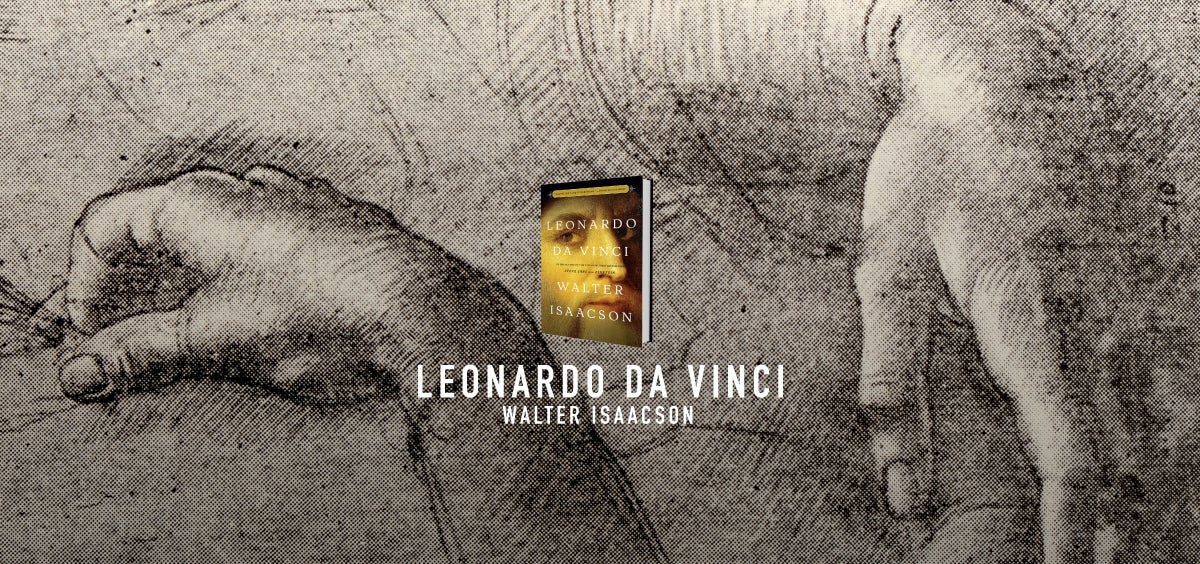I read all kinds of books, including ones that only the harshest college professors would assign.
Shortly after Melinda and I got married, I told her I was bidding on a notebook that could wind up costing a lot of money. “Don’t you already have a great portable computer?” she asked.
I explained that by “notebook,” I meant the old-fashioned kind. And by “old-fashioned,” I meant really old-fashioned, as in more than 500 years old. The notebook in question was one of the 32 surviving journals of Leonardo da Vinci.
After I won the bid, I broke a longstanding tradition. I was supposed to change the name from Codex Hammer (the previous owner was the industrialist Armand Hammer) to Codex Gates, but I thought that sounded silly and I changed the name back to Codex Leicester, the name it held from 1719 until 1980.
The Codex Leicester is not nearly as famous as artworks such as the Mona Lisa and The Last Supper. And Dan Brown fans will be disappointed to know that it doesn’t contain codes protecting age-old secrets. But it’s a scientific treasure. In fact, there are insights, such as one about how blood flows through the heart, that were so far ahead of their time that researchers finally verified them only a few decades ago.
Given my fascination with Leonardo, I was eager to read Leonardo da Vinci, Walter Isaacson’s new biography. I’ve read a lot about Leonardo over the years, but I had never found one book that satisfactorily covered all the different facets of his life and work. Walter—a talented journalist and author I’ve gotten to know over the years—did a great job pulling it all together. If you liked Walter’s major biographies of Steve Jobs and Albert Einstein, you’ll probably appreciate this one.
More than any other Leonardo book I’ve read, this one helps you see him as a complete human being and understand just how special he was. He came close to understanding almost all of what was known on the planet at the time. That’s partly because scientific knowledge was relatively limited back then, partly because he had a high IQ, but mostly because he was insatiably curious about pretty much every area of natural science and the human experience. He studied, in meticulous detail, everything from the flow of water and the rise of smoke to the muscles you use when you smile.
Amazingly, he did it with almost no formal schooling. His father was a notary, a profession that gave him some prominence and prosperity, so Leonardo never had to work in the fields. But because Leonardo was born out of wedlock (his mother was a poor, orphaned peasant girl), he was not sent off to school. That turned out to be a blessing. Leonardo got free time to wander, look at nature, and start creating notebooks full of observations and ideas. He became, in his own words, “a disciple of experience.”
Isaacson also does a great job of explaining why Leonardo’s work is so revered. Unless you’re an art historian, you might even wonder if paintings like the Mona Lisa are famous just for being famous. But Walter shows how Leonardo’s genius is in the details. “He became fascinated about how a smile begins to form and instructed himself to analyze every possible movement of each part of the face and determine the origin of every nerve that controls each facial muscle,” he writes. “Tracing which of those nerves are cranial and which are spinal may not have been necessary for painting a smile, but Leonardo needed to know.”
Despite his remarkable artistic talent, Leonardo barely thought of himself as a painter. When he was about 30 years old, he applied for a job with the ruler of Milan. After listing interests from military engineering to science to designing sets for plays, he included almost as an afterthought, “I can also paint.”
There was one downside to having such broad interests: He often switched his focus to new domains right in the middle of a project, leaving works unfinished. Here’s a classic example: After Leonardo won a coveted commission to create a large statue of a nobleman perched on a horse, Leonardo procrastinated by going down multiple rabbit roles. For example, he dissected horses to understand their anatomy, created new systems for feeding horses, and designed cleaner stables. He never completed the statue, and he never published the treatise on horses he started.
When you look across all of Leonardo’s many abilities and his few failings, the attribute that stands out above all else was his sense of wonder and curiosity. When he wanted to understand something—whether it was the flow of blood through the heart or the shape of a woodpecker’s tongue—he would observe it closely, scribble down his thoughts, and then try to figure it all out.
It’s a bit of a lost art these days—even though, in the age of free Wikipedia entries and YouTube videos, it’s easier than ever to satisfy your curiosity. It’s ironic that we can be reminded about the wonders of modern life by a man who lived 500 years ago.





